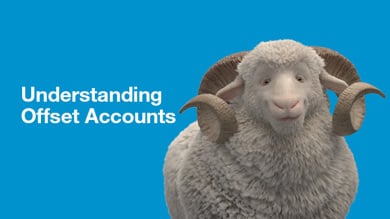
Why a tighter lending market isn’t all bad
Lenders may be less generous than a few years ago, but there’s an upside to a tighter lending environment.
Why a tighter lending market isn’t all bad
Lenders may be less generous than a few years ago, but there’s an upside to a tighter lending environment.
The word on the street is that it’s harder to get a home loan today than it was a few years ago.
Sure, it’s true the Australian Prudential Regulation Authority (APRA) has put in place measures to curb the rapid growth of lending, particularly for investors1.
It’s also true lenders may not be offering the same level of funding to customers as they may have offered in the past.
But that doesn’t mean banks aren’t lending. And it certainly doesn’t mean you can’t use this environment to your advantage.
Know where you stand
Terree Olive, a RAMS Home Loan Specialist based in Canberra, says tighter lending conditions provide a good opportunity for people to get a level of finance they can be comfortable with.
“This environment isn’t about stopping people from buying homes. It’s about stopping people from borrowing more than they can afford to repay – which is a good thing really.”
Terree says the first step to knowing how much money you can afford to borrow is having a frank and open conversation with your home loan provider, so they understand your financial situation.
“We want to help you get into your home, and we can help you find ways to make it happen – particularly if you talk to us early in the process.”
“For example, we might be able to help you restructure your finances to strengthen your home loan application. Or if you’re not ready to borrow right now, we can help you put in place a plan to get ready.”
Tips and traps for applications
With greater scrutiny on home loan applications, there are a number of things you can do to improve your attractiveness to lenders. These include:
1. Get real with savings
Lenders will generally look at your bank accounts for the last three months to check your level of ‘genuine savings’.
Terree highlights that “with RAMS, you may even be able to use your rental history2 as evidence of savings.”
Always keeping some spare cash in a savings account or home loan offset account will boost your application.
2. Pay your bills on time
Your credit history will be reviewed to help assess your loan application. Consider setting up direct debits for your bills and credit cards to make sure you’re always paying on time.
3. Get rid of unnecessary credit
They may be great for earning reward points, but having multiple credit cards can impact the amount of money a lender will lend you – even if you pay them off on time.
For example, if you have two credit cards with $15,000 limits it could reduce your borrowing capacity by $30,000. You many want to consider cancelling a credit card or two if you don’t really need them, or least lowering their limits.
4. Watch out for buy now, pay later services
Using buy now, pay later services like AfterPay or Zip Pay is effectively another form of credit that will be taken into account when assessing your borrowing capacity. If possible, do your shopping with cash or a credit card you pay off each month.
Need a hand with your home loan application?
A RAMS Home Loan Specialist will take the time to discuss your financial situation and help you take steps to achieve your property goals.
Get in touch with yours today, or call 13 RAMS and we’ll put you in touch with one.
1Tighter lending conditions: Explaining the turn of Australia’s housing markets – Domain, 25 October 2018
2 Depending on the Loan to Valuation Ratio (LVR) of your application, you need to demonstrate either 6 or 12 months’ satisfactory rental history through receipts for private rentals or a letter from the licensed property manager / agent and your weekly rental payment must exceed 40% of your new weekly loan repayment.
You might also like


